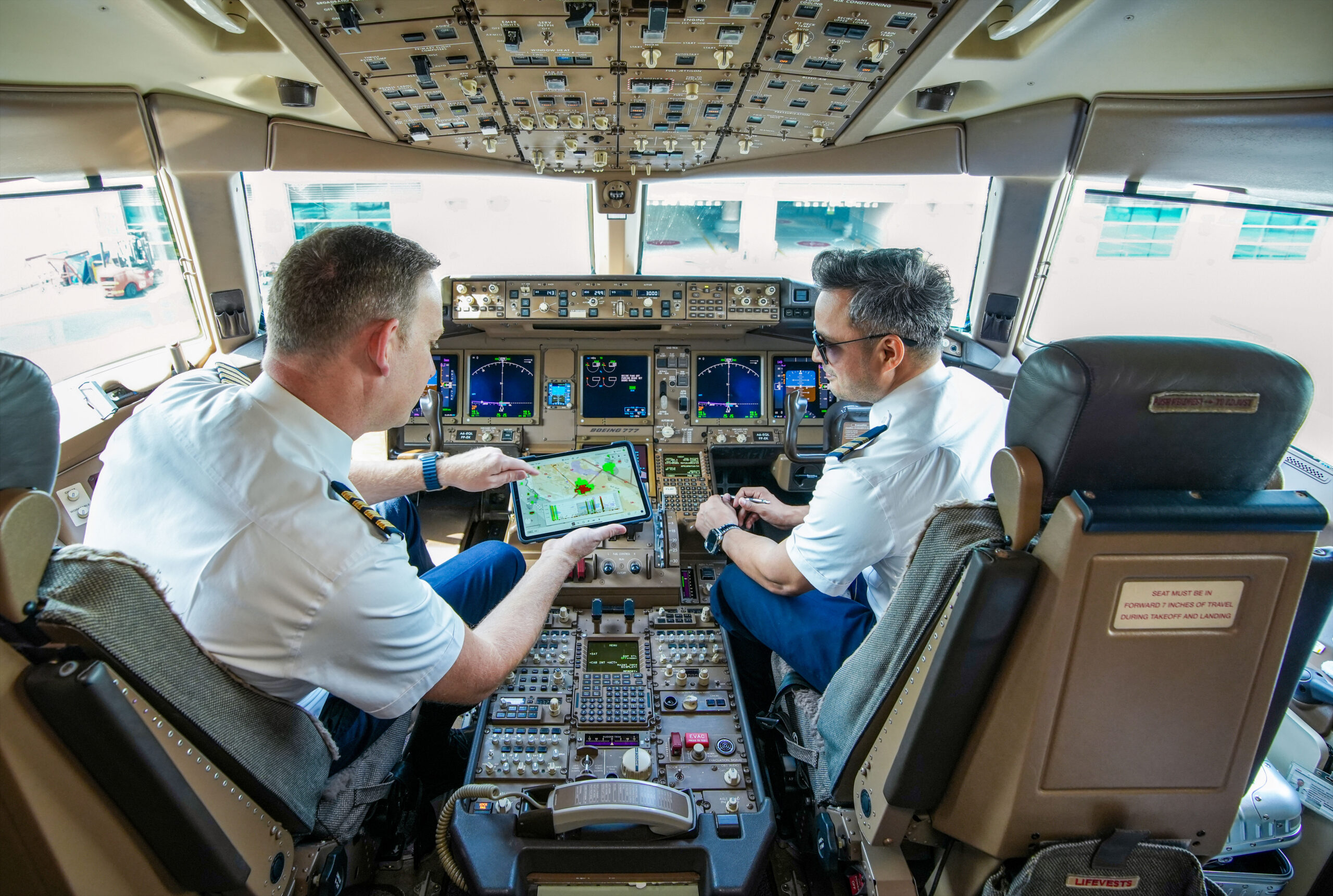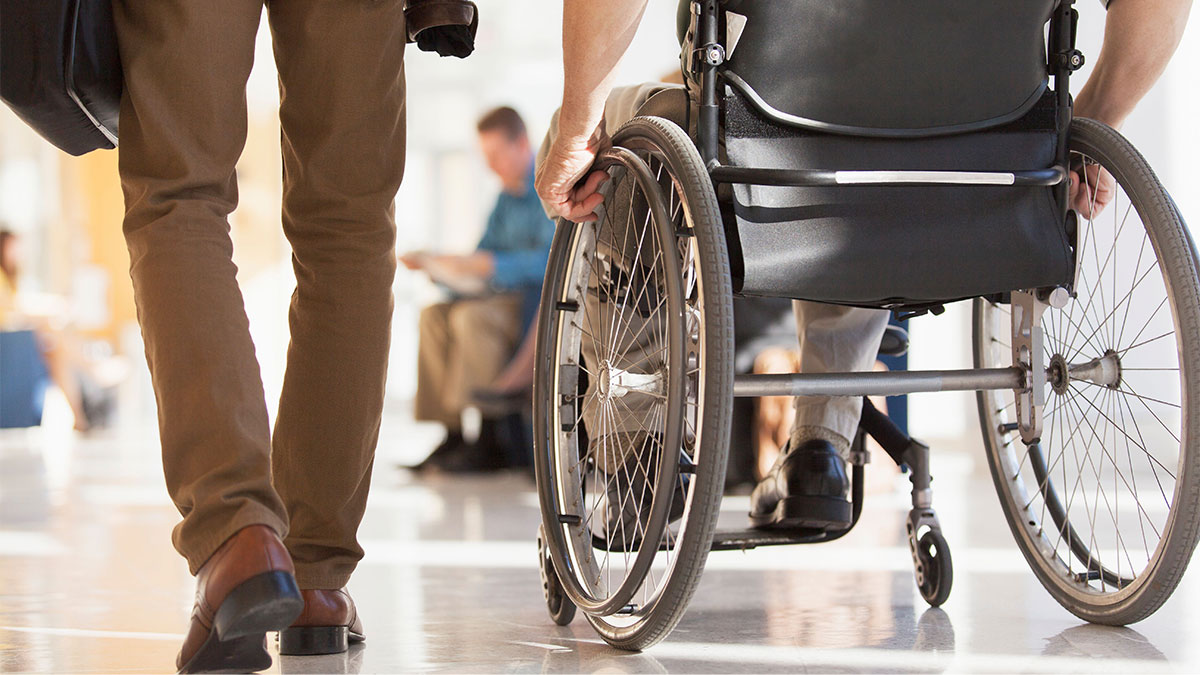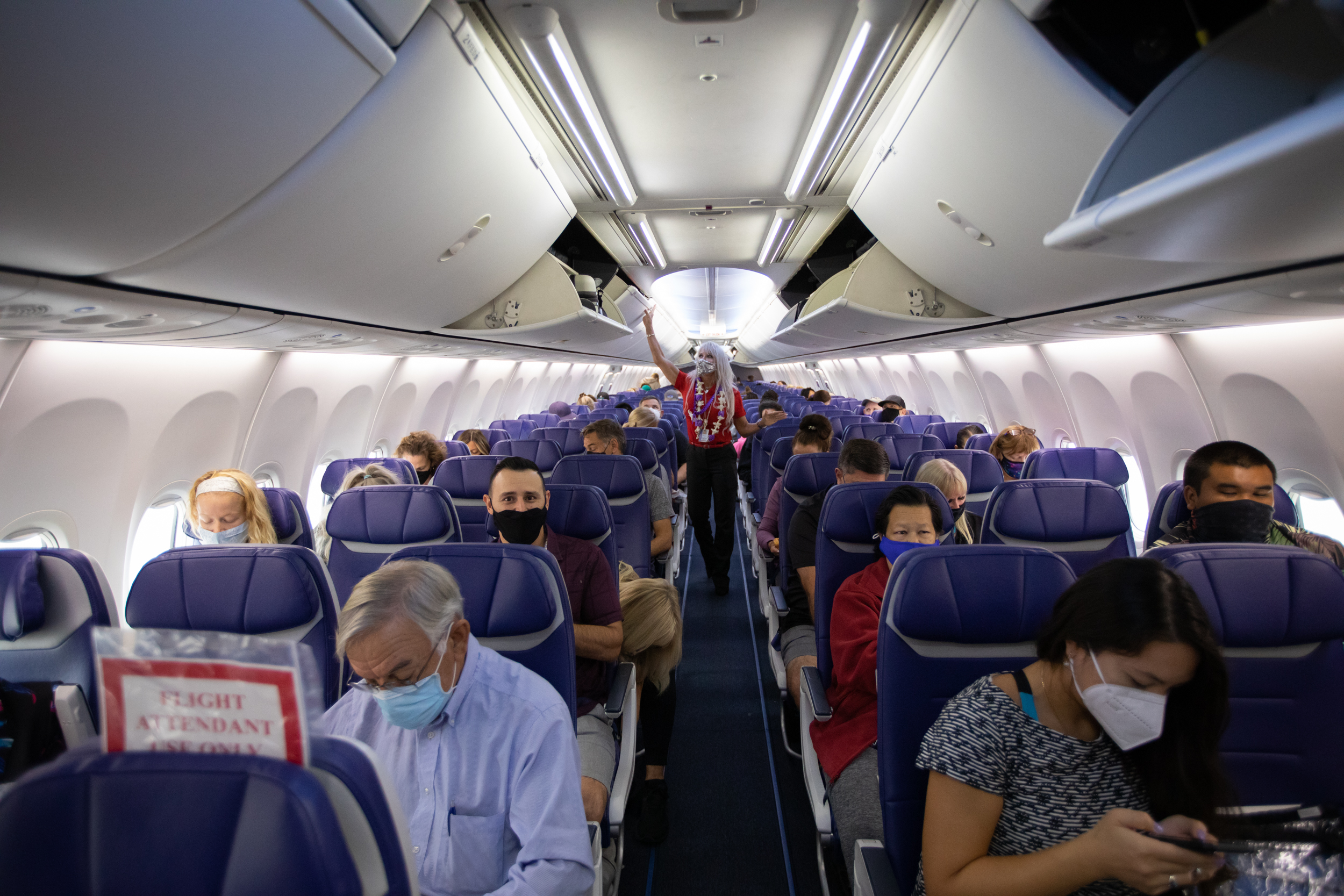What Are Airlines Doing to Address the Increasing Threat of Turbulence?
An apparent uptick in severe turbulence incidents prompts airline executives to discuss safety procedures for commercial flights at the IATA AGM
June 4, 2024

Photo: Courtesy of Emirates
In recent times, there have been frequent headlines worldwide about turbulence, with a noticeable increase in incidents causing injuries and forcing pilots to make emergency landings. Despite technological advances and safety protocols, turbulent air continues to pose a significant danger. However, airline executives remain cautious, suggesting that the issue might be getting blown out of proportion.
But recent encounters with severe turbulence have raised awareness about the issue, prompting airlines to look for new safety measures and advanced technologies to ensure passenger safety and comfort. This topic was a major focus at the IATA Annual General Meeting (AGM) in Dubai, where airline CEOs and industry leaders gather annually to discuss the latest developments and challenges.
The Singapore Airlines Incident: A Wake-Up Call
On May 21, Singapore Airlines Flight SQ321 encountered severe turbulence en route from London to Singapore. The Boeing 777-300ER experienced intense shaking as it entered Thai airspace, leading to an emergency landing in Bangkok.
Tragically, one passenger lost his life, and many others sustained serious injuries, forcing the pilots to divert and perform an emergency landing in Bangkok. As of the latest updates, more than 20 passengers are still receiving medical treatment in Thailand.
Singapore Airlines flight #SQ321, operating from London (Heathrow) to Singapore on 20 May 2024, encountered severe turbulence en-route. The aircraft diverted to Bangkok and landed at 1545hrs local time on 21 May 2024.
We can confirm that there are injuries and one fatality on…
— Singapore Airlines (@SingaporeAir) May 21, 2024
This incident and a subsequent turbulence event on a Qatar Airways flight over Turkey have drawn increased attention to turbulence management in the aviation community.
In response, Singapore Airlines has implemented stricter cabin procedures during turbulence, halting in-flight meal services and ensuring that crew members are seated and strapped in when the seatbelt sign is on. Other airlines are expected to follow suit.
Climate Change and Turbulence
While there is ongoing debate about whether climate change is increasing the frequency and severity of turbulence, the sheer number of flights has undoubtedly risen.
Willie Walsh, director general of IATA, notes that the projected 39 million flights this year greatly exceed the 20 million annual flights around the year 2000, contributing to the perception of more frequent turbulence.

Photo: Willie Walsh, IATA AGM. Courtesy of IATA
However, airline leaders were queried about the apparent increase in turbulence events during the IATA AGM. The organization’s director general quickly responded, “Turbulence is not a new issue.”
“I was a pilot for 20 years; it’s not as if turbulence has just developed,” he said.
But according to Sir Tim Clark, the President of Emirates, the airline has witnessed a notable uptick in turbulence incidents. He emphasized that Emirates is adopting a cautious and strategic approach, which entails the meticulous collection of data and in-depth exploration of artificial intelligence to enhance predictive analytic capabilities specifically related to turbulence.

Photo: Sir Tim Clark, IATA AGM. Courtesy of IATA
Clark highlighted the challenges involved in predicting turbulence and stressed the importance of gaining a better understanding of weather patterns and utilizing wind velocity data from jet streams to enhance forecasting capabilities. He assured the public that global carriers are equipped with various tools to reduce the risks associated with turbulence.
On the other hand, Lufthansa Group‘s CEO Carsten Spohr, also a pilot, underscored the importance of using common sense while traveling. He compared wearing a seatbelt in a car to doing the same on a plane, stating that it’s a necessary safety precaution.
“Every time you visit our pilots in the flight deck, you’ll see them wearing their seatbelts,” Spohr told Business Traveler.
IATA’s Turbulence Aware
One of the tools available to mitigate turbulence—widely discussed during the AGM in Dubai—is the IATA Turbulence Aware program, a real-time data collection system designed to help airlines minimize the impact of turbulence.
According to Walsh, the program collects real-time data from the aircraft. In the event of turbulence, the program records the details and sends them to other connected aircraft to warn them about the severity of the turbulence.
Nick Careen, who is in charge of IATA’s work on safety, security, and operations, pointed out that there has been a significant increase in airlines’ interest in the program following recent events.

Photo: Courtesy of Andreas Spaeth
During the AGM, Careen mentioned that there had been discussions with several airlines and a heightened level of interest. He believes that improved access to information and data will enhance the situation.
The program, which currently has 21 airlines contributing data, aims to collect turbulence reports from 150 million flights by the end of 2024.
Emirates is one of the carriers participating in the program. According to the airline, they joined the platform and integrated it with its Lido mPilot, a mobile navigation solution from Lufthansa Systems. This integration allows Emirates to automatically share turbulence data from over 140 aircraft, enhancing the safety and efficiency of their operations.
Per the airline’s statement, all upcoming aircraft, including the Airbus A350 and the Boeing 777-8, 777-9, and 787, will be equipped to participate in the program.

Photo: Airbus A350-900. Courtesy of Emirates
“IATA Turbulence Aware data enhances the value of Lido mPilot by providing pilots with real-time, accurate, and comprehensive information on turbulence, enabling them to make informed decisions and navigate more efficiently,” explains Andreas Medlhammer from Lufthansa Systems.
According to Captain Hassan Alhammadi of Emirates, “Actively participating in IATA’s Turbulence Aware platform and equipping our pilots with a complement of the latest industry technologies, such as the mobile navigation solution Lido mPilot from Lufthansa Systems, is part of our commitment to ensure operational safety, efficiency, and customer comfort on every flight.”

Photo: Courtesy of Emirates
As the aviation industry continues to grow and evolve, the commitment to safety remains paramount. The collaboration between IATA, airlines, and technology providers is driving significant advancements in turbulence management.
By enhancing real-time data sharing and improving safety protocols, airlines are addressing the immediate challenges of turbulence and laying the groundwork for a safer, more comfortable flying experience in the future. As passengers, the best advice remains simple: always fasten your seatbelt, just as the pilots do in the cockpit.



